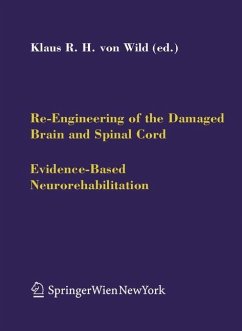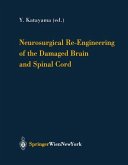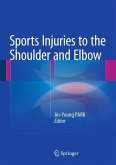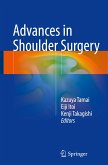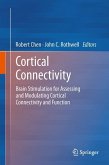Traumatic Brain Injury (TBI) can lead to loss of skills and to mental cognitive behavioural
deficits. Paraplegia after Spinal Cord Injury (SCI) means a life-long sentence of paralysis, sensory loss, dependence and in both, TBI and SCI, waiting for a miracle therapy. Recent advances in functional neurosurgery, neuroprosthesis, robotic devices and cell transplantation have opened up a new era. New drugs and reconstructive surgical concepts are on the horizon. Social reintegration is based on holistic rehabilitation. Psychological treatment can alleviate and strengthen affected life. This book reflects important aspects of physiology and new trans-disciplinary approaches for acute treatment and rehabilitation in neurotraumatology by reviewing evidence based concepts as they were discussed among bio and gene-technologists, physicians, neuropsychologists and other therapists at the joint international congress in Brescia 2004.
Re-EngineeringoftheDamagedBrainandSpinalCord isdedicatedtoTetsuoKanno,M. D. ProfessorofNeurosurgery Bypresenting theoriginal papers thatmakeupthis thefeaturesofthelocalmedicallandscapeinthe- third supplement we wish to make a further contri- gionswheretheyareenacted. Whatismore,progr- bution to the issue of functional rehabilitation, this sivenew?ndingsmustbealsosubjectedtoafrequent soimportantandfascinatingmodernareaofresearch revision. Ontopofthis,itshouldnotbeforgottenthat inthe?eldofneurosciences. Thecongresspaperswe even when committal therapy guidelines are c- haveselectedconstituteagoodre?ectionofthetrans- sistentlyapplied,thereareconsiderablevariationsin disciplinary objectives. The literature references are therangeofpotentialcomplicationsandintheo- designedasaguidetoleadtheinterestedreadertoa comeofprospectivecontrolledmulti-centreandmul- deeperandmoredetailedunderstandingoftheindi- nationalstudiesontheissueofqualitymanagement. vidualissues. Functionalrehabilitationhasbeenanoriginaltask The demand for evidence-based medicine is well ofneurosurgeryfromtheveryoutset. The1990shave justi?ed; however, it rapidly comes up against the enteredtheannalsofbrainresearchasthe Decadeof limitsoffeasibility,especiallywherecontrolledthe- theBrain . Sincethentherehasbeenaneverstronger peuticstudiesareconcerned. TheCochrancollection growthofneuroscienti?cinterestworldwide,accom- of high-quality evidence-based healthcare databases paniedbysubstantial?nancialengagement. Thishas hasthusfarbeenofnohelptousindrawingupthe- primarily resulted in advances in basic neuro- peutic recommendations for the re-engineering of biologicalandneurophysiologicalresearchandalsoin brain and spinal-cord lesions. Today as ever, the thegrowthofneuroscienti?cknowledgeaboutbasic opinion of experts and empirically based medical mechanismsformotor control,paincontrol,aware- treatment and posttraumatic neurorehabilitation ness, cognition, learning and memory. The conse- continuetooccupyanindispensablepositionforthe quencemustbetoensurethattheadvancesmadeinthe everydayclinicalpracticeofneurosurgicalandneu- neuroscienti?cresearchareaareadequatelyexpanded traumatological therapies. Promising adjunct - intopracticalneurosurgicalcareandre-engineeringof proachesincludeneuropharmacology,forcascadesof brainandspinalcordlesionsandtoensureuponnew molecular interactions are known to be underlying approaches. Following this a fundamental path will activity-dependent plasticity and skills learning, as resultinanimprovedandmoree cientpreventionin many of these processes involve the major tra- thefuture,themeasuresthatstandrightatthefore- mitters. Furthermore,biologicalinterventionsby- front of all rehabilitation principles, meaning that ingendogenousneuronsandgliaaswellasexogenous conventionalconceptsmustbemodi?edtokeeppace stemcells,bone-marrowcells,macrophages,andother withthemoretask-speci?c,intensive,andprogressive types may promote the regeneration of nerve cells, demands. In this connection a series of guidelines, tissue, and neural circuitry. Class one studies have recommendations, and expert opinions and also beenmade,andnowclasstwostudieshavebeeni- algorithms have been elaborated by national and tiated, for example in connection with acute spinal international expert panels and multidisciplinary as- cord injury (SCI). The clinical application of fu- sociationsfortheacutemedicalcareofpatients.
deficits. Paraplegia after Spinal Cord Injury (SCI) means a life-long sentence of paralysis, sensory loss, dependence and in both, TBI and SCI, waiting for a miracle therapy. Recent advances in functional neurosurgery, neuroprosthesis, robotic devices and cell transplantation have opened up a new era. New drugs and reconstructive surgical concepts are on the horizon. Social reintegration is based on holistic rehabilitation. Psychological treatment can alleviate and strengthen affected life. This book reflects important aspects of physiology and new trans-disciplinary approaches for acute treatment and rehabilitation in neurotraumatology by reviewing evidence based concepts as they were discussed among bio and gene-technologists, physicians, neuropsychologists and other therapists at the joint international congress in Brescia 2004.
Re-EngineeringoftheDamagedBrainandSpinalCord isdedicatedtoTetsuoKanno,M. D. ProfessorofNeurosurgery Bypresenting theoriginal papers thatmakeupthis thefeaturesofthelocalmedicallandscapeinthe- third supplement we wish to make a further contri- gionswheretheyareenacted. Whatismore,progr- bution to the issue of functional rehabilitation, this sivenew?ndingsmustbealsosubjectedtoafrequent soimportantandfascinatingmodernareaofresearch revision. Ontopofthis,itshouldnotbeforgottenthat inthe?eldofneurosciences. Thecongresspaperswe even when committal therapy guidelines are c- haveselectedconstituteagoodre?ectionofthetrans- sistentlyapplied,thereareconsiderablevariationsin disciplinary objectives. The literature references are therangeofpotentialcomplicationsandintheo- designedasaguidetoleadtheinterestedreadertoa comeofprospectivecontrolledmulti-centreandmul- deeperandmoredetailedunderstandingoftheindi- nationalstudiesontheissueofqualitymanagement. vidualissues. Functionalrehabilitationhasbeenanoriginaltask The demand for evidence-based medicine is well ofneurosurgeryfromtheveryoutset. The1990shave justi?ed; however, it rapidly comes up against the enteredtheannalsofbrainresearchasthe Decadeof limitsoffeasibility,especiallywherecontrolledthe- theBrain . Sincethentherehasbeenaneverstronger peuticstudiesareconcerned. TheCochrancollection growthofneuroscienti?cinterestworldwide,accom- of high-quality evidence-based healthcare databases paniedbysubstantial?nancialengagement. Thishas hasthusfarbeenofnohelptousindrawingupthe- primarily resulted in advances in basic neuro- peutic recommendations for the re-engineering of biologicalandneurophysiologicalresearchandalsoin brain and spinal-cord lesions. Today as ever, the thegrowthofneuroscienti?cknowledgeaboutbasic opinion of experts and empirically based medical mechanismsformotor control,paincontrol,aware- treatment and posttraumatic neurorehabilitation ness, cognition, learning and memory. The conse- continuetooccupyanindispensablepositionforthe quencemustbetoensurethattheadvancesmadeinthe everydayclinicalpracticeofneurosurgicalandneu- neuroscienti?cresearchareaareadequatelyexpanded traumatological therapies. Promising adjunct - intopracticalneurosurgicalcareandre-engineeringof proachesincludeneuropharmacology,forcascadesof brainandspinalcordlesionsandtoensureuponnew molecular interactions are known to be underlying approaches. Following this a fundamental path will activity-dependent plasticity and skills learning, as resultinanimprovedandmoree cientpreventionin many of these processes involve the major tra- thefuture,themeasuresthatstandrightatthefore- mitters. Furthermore,biologicalinterventionsby- front of all rehabilitation principles, meaning that ingendogenousneuronsandgliaaswellasexogenous conventionalconceptsmustbemodi?edtokeeppace stemcells,bone-marrowcells,macrophages,andother withthemoretask-speci?c,intensive,andprogressive types may promote the regeneration of nerve cells, demands. In this connection a series of guidelines, tissue, and neural circuitry. Class one studies have recommendations, and expert opinions and also beenmade,andnowclasstwostudieshavebeeni- algorithms have been elaborated by national and tiated, for example in connection with acute spinal international expert panels and multidisciplinary as- cord injury (SCI). The clinical application of fu- sociationsfortheacutemedicalcareofpatients.

